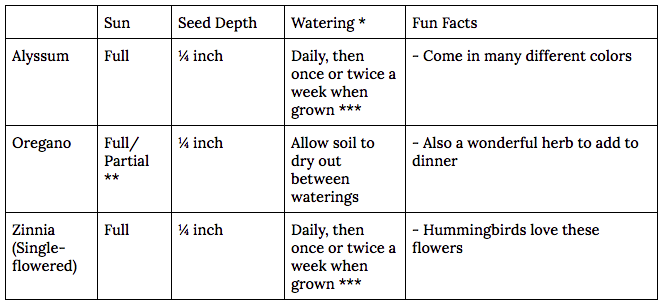With shelter-in-place orders in effect, many parks and open space preserves are closed. Many of us are missing our green spaces and want to start our own at home. Some are feeling more distant from friends and family, and find solace in nurturing plants. Others may find self-sufficiency in growing plants for food. In normal times you could look outside the home: volunteer with Our City Forest, join a community garden, help out a friend with their yard, or try covert guerrilla gardening. With social distancing, however, those may be less appealing options.
Regardless of why you may want to start growing plants or a garden, you will need space to do it but maybe you don’t have a yard. Maybe you are renting a room or an apartment. You just might think you don’t have enough space. Well, no worries. There are options for you. It turns out that even in a small space you can grow a successful garden. Even a window or a balcony is sufficient for a start. Some people can make it work with just grow lights.
For a successful small space garden, be sure to choose plants that will do well in your environment. Consider the plants’ environment -- sunlight, humidity, wind, and temperatures. Most likely, you will have plants in pots or boxes and the size of the container also influences the type of plants you can grow most successfully. Your capacity for plant maintenance is an important consideration as well. If you tend to move often, you will want to think about plants that can move more easily with you. I have a hardy aloe that moved with me half a dozen times! The last couple of times were harder as it had been transplanted to a much larger pot. Whatever plants you decide to get, research the best ways to grow them.
I once tried to grow air plants in my bathroom, with the naive belief that the humidity from my shower alone would suffice for them to flourish. They did not, however, fare well. And showering more often didn’t help. The room simply did not stay humid enough long enough for them. They did much better after I read about air plant care and started giving them weekly soaks.
Did you know that you can propagate basil by taking a stem leftover from the kitchen and place it in a jar of water? Days later, you will see roots sprouting from the basil and, after 2 weeks, you can plant it in a small pot of soil. Eco friendly tip: reuse a plastic yogurt container, or one of those delivery/take-out food containers. Clear containers can be okay, but some plants don’t like sunlight on their roots. Personally, I like to see the root structure through a clear container. Use the appropriate compost mixture for best results. You may scoop some soil from outside, but it comes with risks -- it may not be as rich with nutrients, may contain competing weed seeds, may come with hungry bugs, or contain plant pathogens.
One year, I ran with this basil-growing plan. Every week, I pinched off a branch of basil and started propagating it and eventually I had a small forest of them growing on shelves by the window. At the end of the season, I froze the basil and used it throughout the next year. A plant stand or shelf can help expand your plant capacity within an area.
Introducing new plants into an indoor garden can come with risks. If bugs sneak in with the new plant, they may spread rapidly over your plants since their natural predators are outside. This is where plant social distancing comes into play. You can designate another space to quarantine your new plants for some time until you feel confident they aren’t harboring bugs or disease. This is something I learned the hard way after white flies and aphids wrecked my plants. Sometimes it is unavoidable if the bugs enter through an open window. Beware open windows!
Even potentially large plants can be grown in a small space. I started growing some loquat trees from seed after a friend gave me some of their fruit to try -- they’re tasty and grow well in the Bay Area. Keep in mind not all fruit trees grow true to seed or germinate readily in all weather. I kept the loquat trees outside growing on my apartment balcony. They grew well despite the heat and windy weather. On the other hand, an avocado tree I started could not tolerate the wind exposure and suffered. Over time the loquats stayed small as I kept them in small pots. Years later when I got some yard space, I finally planted them. They have since shaken their bonsai form and are flourishing.















